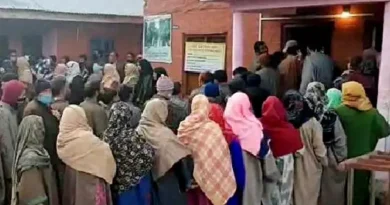A Comparative Analysis of Economic Progress, Infrastructure, and Education in Indian-Administered Jammu & Kashmir and Pakistan-Occupied Kashmir (POK)
Tariq Bhat /Limya Mahajan
The region of Jammu & Kashmir (J&K) has been a focal point of political and territorial disputes between India and Pakistan since 1947. The stark disparity in development between Indian-administered Jammu & Kashmir and Pakistan-occupied Kashmir (POK) has become increasingly evident over the years, despite the ongoing territorial disagreements.
Economic Development: A Tale of Two Realities
The economic landscapes of Indian-administered J&K and POK present a stark contrast. Following the abrogation of Article 370 in August 2019, Indian-administered J&K has experienced a surge in investment, industrial growth, and economic stability. Infrastructure projects such as the Chenani-Nashri Tunnel and ongoing railway connectivity initiatives have significantly improved access and mobility within the region.
Moreover, government efforts to attract domestic and international tourists have bolstered the tourism sector, with a focus on sectors like tourism, horticulture, and handicrafts. This strategic focus has propelled the state towards a stable and self-sustaining economy.
In contrast, Pakistan-occupied Kashmir lags significantly in terms of economic progress, relying heavily on financial aid from Islamabad. POK struggles with chronic unemployment, lack of industrialization, and underdeveloped markets, leading to widespread economic stagnation. The absence of substantial infrastructure projects and limited opportunities for local employment further exacerbate these challenges, with many residents relying on subsistence agriculture for survival.
Infrastructure: Progress vs. Neglect
Indian-administered J&K has made significant strides in infrastructure development. The construction of new highways, expansion of railway networks, and development of airports have substantially improved connectivity within the region. The government’s ‘Back to Village’ initiative has been pivotal in rural development, providing better roads, electricity, and water supply to remote areas, thereby boosting the region’s tourism sector.

Conversely, the state of infrastructure in POK remains dismal. Poor road connectivity, inadequate public transport, and a lack of essential services such as healthcare and sanitation reflect the region’s stagnation. Despite its proximity to major urban centres like Islamabad, POK has not seen comparable investment in infrastructure, resulting in many areas being inaccessible during harsh weather conditions and frequent power outages, further hampering economic activities.
Education: Empowerment vs. Disillusionment
The educational landscape in J&K is another area of stark contrast. With a well-established network of universities, colleges, and technical institutes, including prestigious institutions like the University of Kashmir and NIT Srinagar, the region has made substantial progress. The literacy rate in J&K stands at around 77%, significantly higher than in POK. Various government initiatives, such as the PM Scholarship Scheme for J&K students, have further integrated local students into national education systems.
In contrast, POK suffers from limited educational resources, with fewer institutions of higher learning and technical education, leading to a lower literacy rate—estimated at around 60%. Underfunded schools and teacher absenteeism exacerbate the challenges faced by the education system in POK, resulting in many students seeking better opportunities outside the region, leading to a brain drain.
Government Initiatives and Future Outlook
The Indian government’s initiatives in J&K, such as the ‘Prime Minister’s Development Package’, have allocated substantial funds for infrastructure, education, and healthcare, with the development of Special Economic Zones (SEZs) aimed at attracting foreign investment and entrepreneurship schemes designed to create job opportunities for the youth.

The region’s integration into India’s broader economic and governance framework is expected to boost long-term growth and stability, with women in J&K also benefiting from better access to education and economic opportunities.
The significant difference in development between Pakistan-Occupied Kashmir and Indian-administered Jammu & Kashmir clearly illustrates how governance and policy priorities influence the prosperity of a region. While Indian-administered J&K continues to benefit from ongoing investments in infrastructure, education, and economic growth, POK is hindered by political instability, poor governance, and underdevelopment.
As these two regions continue to progress, their paths to development provide valuable insights into the crucial role of governance, investment, and policy in shaping the future of a population




